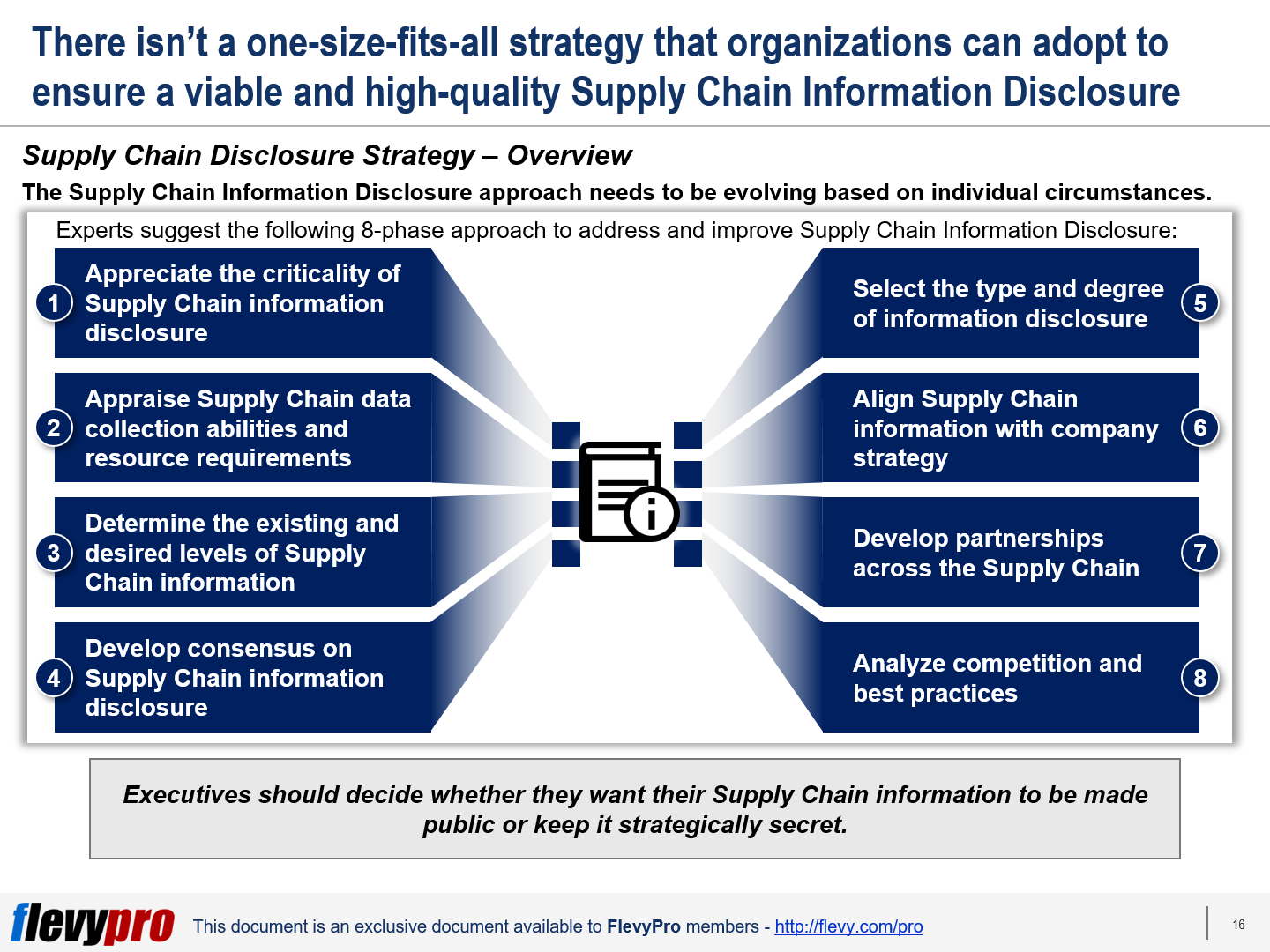Supply Chain Management is getting more and more complex. The pressure on the Supply Chain information to be made public is also increasing day by day. With the popularity and widespread use of social media, it has become more and more difficult for organizations to hide information pertaining to supply chain practices, employees’ treatment, suppliers’ processes, or waste materials generated that could affect the environment. Social media often publicizes negative reports on companies’ supply chain practices—its best to have a robust information disclosure strategy before anything like that ever happens.
Executives must appreciate these external forces and information transparency demands, and react proactively to build and maintain competitive advantage for their organization. They need to be able to, first, accurately predict the data requirements of various stakeholders and then unanimously decide on the type and frequency of the information to be shared. A reactive information disclosure strategy is less time and planning intensive, but it does limit the chances of first-mover advantage over competition.
Supply Chain information can be classified into 4 categories:
- Critical
- Strategic
- Non-critical
- Optional
Critical Information
Organizations using this information category know that they have certain glitches in their Supply Chains that could potentially be a source of criticism from NGOs and the media and may bear adverse effects on their reputation. This includes information concerning unhygienic or inferior quality products; unfair supply chain practices; or environmental problems.
Strategic Information
Even though stakeholders do not ask for this information, this information category is considered strategic as disclosing this data can boost brand value and product differentiation. The strategic information category is high value to the organization but is low on risks for the supply chain. For example, in the beauty, fashion or food products industry, sharing information about organic ingredients may be instrumental in achieving product differentiation and brand reputation.
Noncritical Information
Disclosure of this information category is typically un-called for and has negligible effects on brand value. This information category has low value for the company and has low risks for the Supply Chain. For instance, needlessly sharing child labor data in regions with actively enforced child welfare laws.
Optional Information
This information category is a matter of internal supply chain consideration and has no bearing on the customer. The optional information category is low value to the organization and is actually highly risky for the Supply Chain. For instance, potential quality issues and defects in the supply chain that are identified and resolved during quality control, and do not affect the finished product.
There isn’t a one-size-fits-all strategy that organizations can adopt to ensure a viable and high-quality Supply Chain Information Disclosure. However, the approach needs to be evolving based on individual circumstances. Senior executives should promptly respond to public inquiries, ensure fair treatment of employees, and guarantee compliance with basic human rights to protect their organizations’ reputation. Experts suggest the following 8-phase approach to address and improve Supply Chain Information Disclosure.
Appreciate the criticality of Supply Chain information disclosure
The first step is to analyze the forces that demand increased supply chain transparency and ascertain the importance and priority of information for the stakeholders. Once it is established, the leadership must take actions to address the information requirements of key stakeholders.
Appraise Supply Chain data collection abilities and resource requirements
The next step is to assess the competence of the organization—and that of the suppliers—to gather quality supply chain data. The executives should also evaluate the costs and resource requirements to enable improved information disclosure.
Determine the existing and desired levels of Supply Chain information
The third step is to ascertain the existing knowledge of supply chain information among the executives and suppliers. The leadership needs to identify the desired levels of supply chain data collection and sharing capabilities, and invest to fill any gaps between the existing and desired supply chain data collection and sharing competencies.
Interested in learning more about the remaining phases of the Supply Chain Information Disclosure Strategy? You can download an editable PowerPoint on Supply Chain Disclosure Strategy here on the Flevy documents marketplace.
Are you a Management Consultant?
You can download this and hundreds of other consulting frameworks and consulting training guides from the FlevyPro library.

Comments